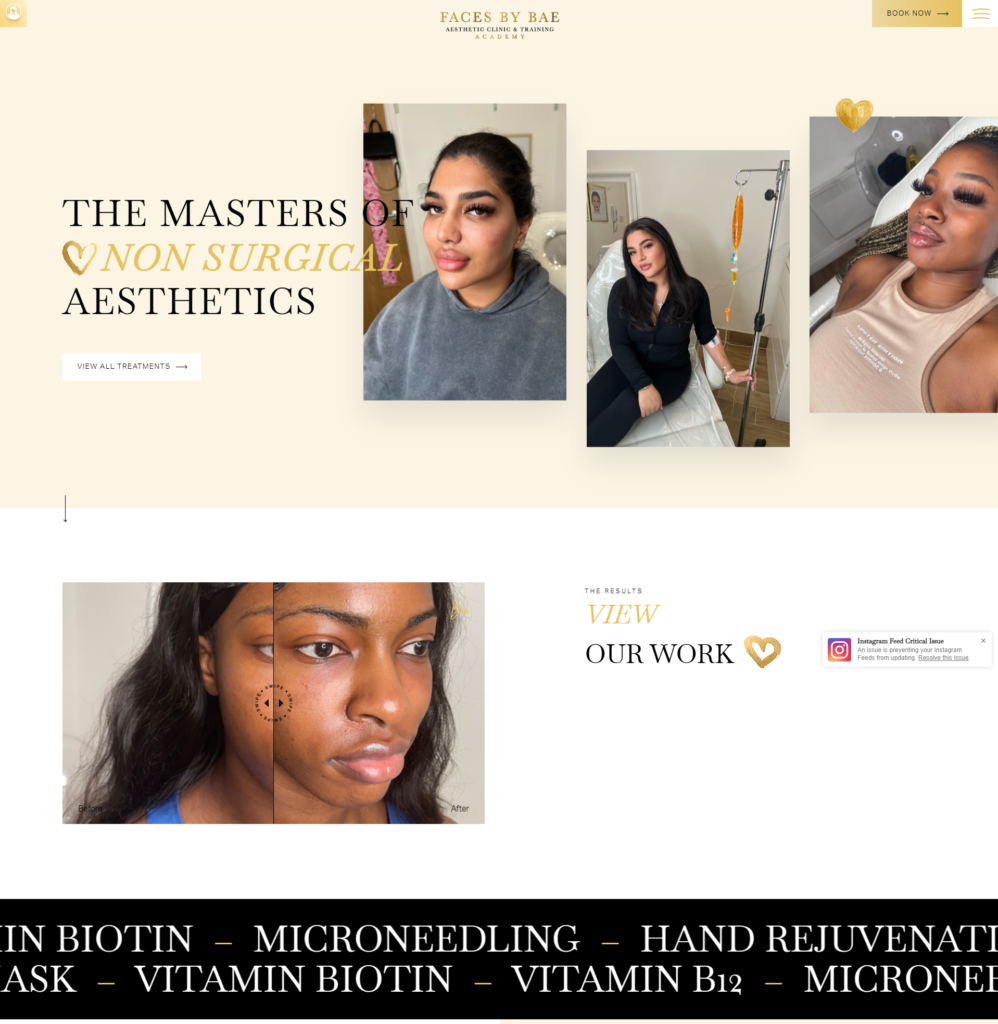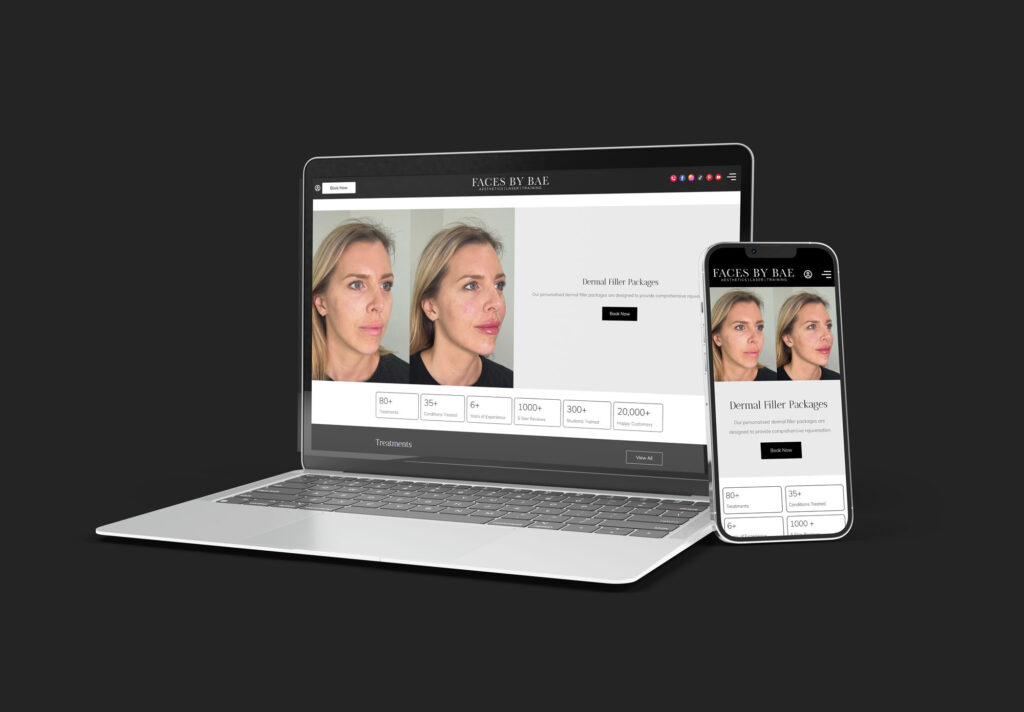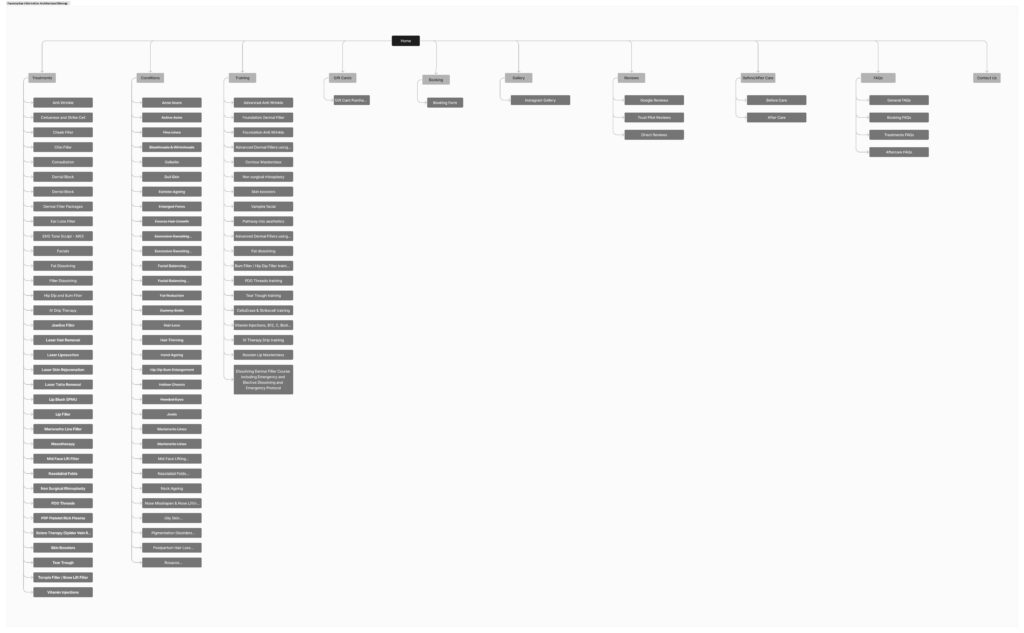Challenge
The existing skin clinic website faced several critical user experience and design limitations:

Outdated Visual Design
- Dated aesthetic that didn't reflect the clinic's modern, professional brand
- Inconsistent color palette and typography
- Lack of visual hierarchy and intuitive navigation
Poor User Journey
- Complicated booking process with multiple unnecessary steps
- Unclear service descriptions and treatment information
- Mobile responsiveness issues leading to high bounce rates
Limited User Engagement
- Minimal interactive elements
- Lack of social proof and testimonial integration
- Ineffective call-to-action (CTA) placement
Research Methodology
User Research
- Conducted comprehensive user interviews (n=25)
- Analyzed website analytics and user behavior
- Performed competitive benchmarking of top aesthetic clinics
Key Insights
- 68% of potential clients abandon booking due to complex processes
- Users prioritize visual credibility and easy information access
- Mobile users represent 62% of total website traffic
Design Strategy
UX/UI Improvement Approach
Simplified Information Architecture
- Restructured navigation with clear, intuitive menu
- Created dedicated service pages with detailed, scannable content
- Implemented progressive disclosure for treatment information.
Wireframing
A wireframe outlining the website’s key sections was created and revised to ensure optimal user flow
Visual Design Enhancement
- Developed a sophisticated, clean color palette aligned with clinic's brand
- Utilized modern typography with improved readability
- Integrated high-quality, professional imagery showcasing treatments
Social Proof and Trust Signals
- Integrated dynamic testimonial carousel
- Added verified review badges
- Highlighted practitioner credentials and awards

Tools and Technologies
Design and Prototyping
- Figjam: Collaborative whiteboarding for initial brainstorming and user flow mapping
- Figma: Primary design tool for wireframing, prototyping, and creating high-fidelity mockups
- Utilized component libraries for consistent design system
- Created interactive prototypes for user testing
Development and Implementation
- WordPress: Content Management System (CMS) for website development
- Elementor: Page builder for flexible and custom layout design
- Advanced Custom Fields (ACF) Pro: Enhanced content management and custom field creation
- Created flexible content blocks for service pages
- Implemented custom post types for treatments and testimonials
Analytics and Tracking
- Google Analytics: Comprehensive website performance tracking
- Set up custom events and conversion tracking
- Developed detailed user behavior reports
- Google Tag Manager: Advanced tracking and event management
- Implemented enhanced conversion tracking
- Simplified tag implementation and management
Technical Implementation
- Responsive design using mobile-first approach
- Performance optimization for faster loading times
- Accessibility compliance (WCAG 2.1 AA standards)
- SEO-friendly structure
Quantitative Results
Performance Metrics
- Customer Engagement: +33% increase
- Booking Conversions: +33% growth
- Mobile Conversion Rate: Improved by 47%
- Average Session Duration: Increased from 1:45 to 3:20 minutes
- Bounce Rate: Reduced from 65% to 38%
Key Learnings
- Importance of user-centered design in service-based websites
- Impact of simplified user journeys on conversion rates
- Value of continuous user feedback and iterative design
- Significance of choosing the right design and development tools
Conclusion
The redesign successfully transformed the skin clinic’s digital presence, creating a user-centric, visually appealing, and high-converting website that significantly improved business metrics.




